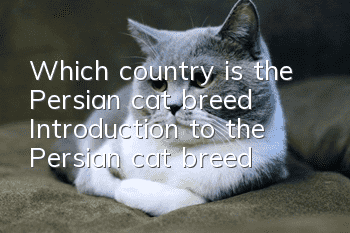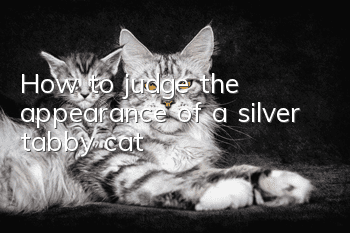Which country is the Persian cat breed? Introduction to the Persian cat breed!

Which country does the Persian cat belong to? The Persian cat originates from the United Kingdom. The initial breeding time was 1800-1809. It is a breed recognized by four associations: CFA, FIFe, GCCF, and TICA. At the end of the 19th century, purebred cat shows had just begun to attract the world's interest, and Persian cats also appeared in people's sight. The first recognized Persian cat breed was the monochromatic Persian cat, which means the entire coat is one color.
Introduction to the origin of Persian cats
At the end of the 19th century, the show of purebred cats had just begun to attract the world's interest. Persian cats were already very popular in the United Kingdom and the United States. After a long and ambiguous history in Europe, this luxuriously coated cat has also appeared on the show stage. People are not sure whether the true ancestor of the Persian cat originated in Persia (now Iran). The first recognized Persian cat breed was the monochromatic Persian cat, which means the entire coat is one color.
Characteristics of Persian cats
In terms of typical characteristics, Persian cats have a round head, a flat face, a short and flat nose, and attractive round eyes. Its trunk is strong and compact, and its limbs are short and muscular. Persian cat owners often hear people praise their cat's beautiful and luxurious long coat, but they must brush it every day to prevent tangles. Persian cats are known for their gentle and loving personalities and love of their families. Of course he doesn't move much, but if you give him a toy, he will play happily.
How to raise Persian cats correctly?
1. The Persian cat’s food plate must be used permanently and cannot be replaced casually. Persian cats are very sensitive to changes in their food plates and sometimes refuse to eat because their food plates are changed. Keep food dishes clean. Newspaper or plastic paper can be placed under the food plate to prevent the sound of the food plate sliding and make it easy to clean. Every time the Persian cat eats leftover food, throw it away or put it away, mix it with fresh food and cook it before feeding it next time.
2. Feeding should be done at a fixed time. Once the Persian cat's "meal" biological clock is formed, it is relatively fixed and should not be changed at will. The place where Persian cat food is placed should be fixed. Persian cats do not like to eat in places with noisy noises and strong light. If there are guests visiting, do not let the guests look at your Persian cat while the Persian cat is eating. The appearance of strangers , will greatly reduce the appetite of Persian cats.
3. Persian cats have the bad habit of using claw hooks to pick up food or take food out of the food plate to eat. Once this phenomenon is discovered, it must be corrected immediately.
4. Persian cats like to eat warm food. Cold food and cold food not only affect the appetite of Persian cats, but also easily cause digestive disorders. Under normal circumstances, the appropriate temperature of food is 30 to 40 degrees. Food taken out of the refrigerator should be heated before feeding.
5. Although Persian cats don’t drink much water, they must have sufficient clean drinking water. Persian cats must drink clean water, and the water must be changed every day. The drinking basin can be placed on the side of the food plate so that the Persian cat can drink freely when it is thirsty.
6. Because Persian cats are long-haired cats, it is very important to comb their hair. Spring is the season when cats shed their hair. At this time, we need to use professional hair grooming tools to comb cats.
7. Bathe them regularly. Bathing a Persian cat can not only make the cat beautiful and clean, but also prevent and treat Persian cat skin diseases and external parasite infections, as well as promote the cat's blood circulation and metabolism and other fitness and disease prevention effects.
8. Persian cats are long-haired cats and are prone to heatstroke in summer. If you suffer from heat stroke, you must first quickly move the cat to a ventilated or shady place, and then use ice cubes or ice water to help cool them down. It is best to send the Persian cat to the veterinarian.
9. Allowing Persian cats to move indoors can keep them as little troubled by diseases and parasites as possible. As long as they receive careful care and good nutrition, go to a trusted veterinary hospital for a comprehensive physical examination and vaccinations every year.
10. If you buy a young Persian cat that is 1-2 months old, the cat at this period has just been weaned and is not used to eating cat food. Remember to buy it some puppy and cat milk replacer powder specially designed for young cats. It can well supplement the nutrition needed by kittens.
- Change cats’ bad habit of scratching and damaging furniture
- Is there any harm in shaving your cat in summer?
- Is it okay for cats to only eat rice?
- What supplements can cats take when eating chicken liver?
- Can kittens be vaccinated after 45 days?
- Does a cat still recognize its owner after being beaten?
- Does the British Shorthair lose hair?
- How to treat vomiting in British shorthair cats, teach you step by step
- Can cats with herpes virus infect pregnant women?
- The difference between cats peeing and loose stools



